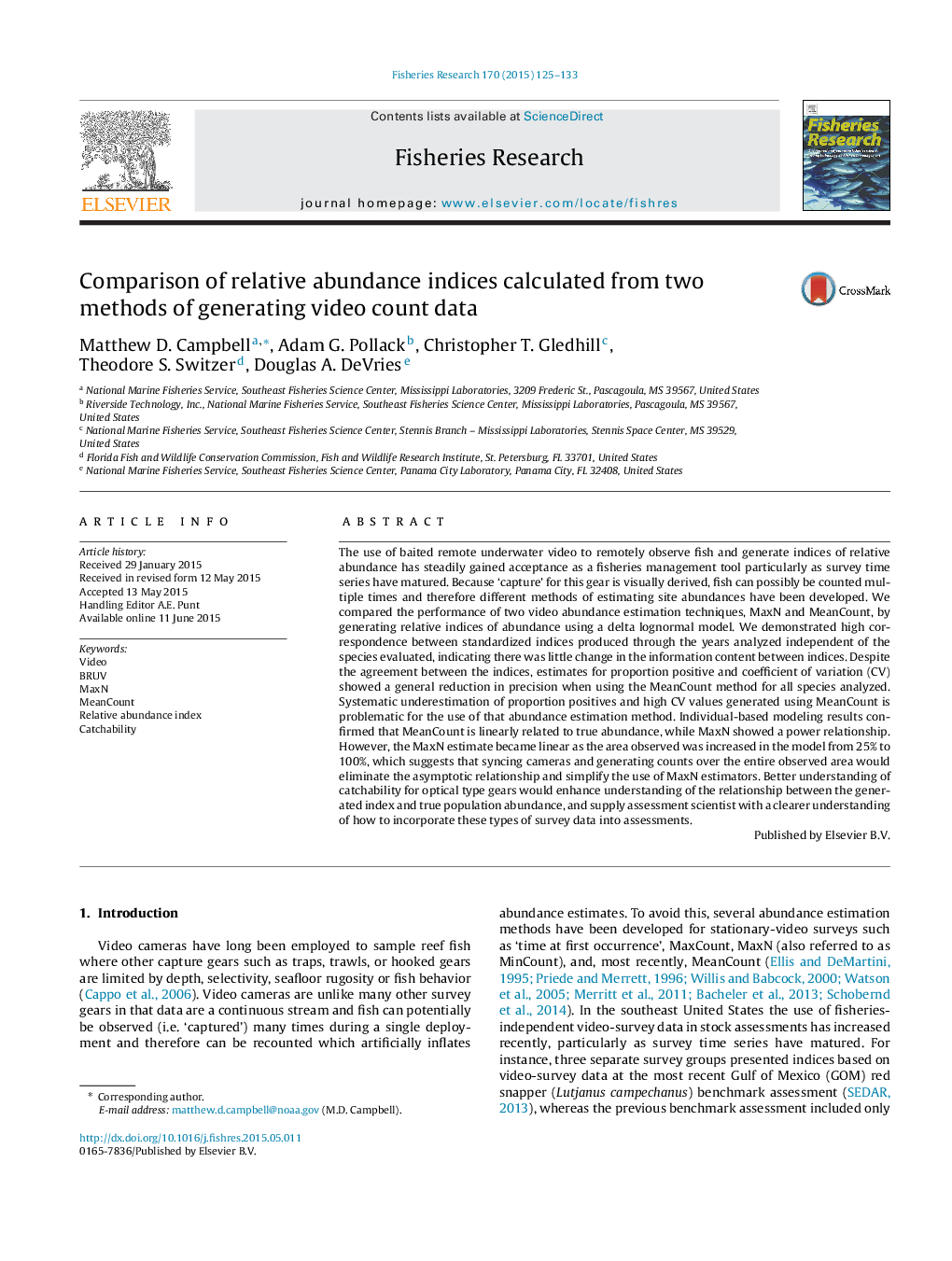| کد مقاله | کد نشریه | سال انتشار | مقاله انگلیسی | نسخه تمام متن |
|---|---|---|---|---|
| 6385502 | 1626798 | 2015 | 9 صفحه PDF | دانلود رایگان |
- Objectives include evaluation of two estimation methods for fish counts derived from video.
- High correspondence between estimated indices of abundance regardless of estimation method.
- Reduced precision of MeanCount estimates as measured by proportion positive and CV for all species analyzed.
- IBM results confirmed that MeanCount is linearly related to true abundance while MaxN showed a power relationship.
- As observed area increased the MaxN estimate showed a linear relationship to true abundance.
The use of baited remote underwater video to remotely observe fish and generate indices of relative abundance has steadily gained acceptance as a fisheries management tool particularly as survey time series have matured. Because 'capture' for this gear is visually derived, fish can possibly be counted multiple times and therefore different methods of estimating site abundances have been developed. We compared the performance of two video abundance estimation techniques, MaxN and MeanCount, by generating relative indices of abundance using a delta lognormal model. We demonstrated high correspondence between standardized indices produced through the years analyzed independent of the species evaluated, indicating there was little change in the information content between indices. Despite the agreement between the indices, estimates for proportion positive and coefficient of variation (CV) showed a general reduction in precision when using the MeanCount method for all species analyzed. Systematic underestimation of proportion positives and high CV values generated using MeanCount is problematic for the use of that abundance estimation method. Individual-based modeling results confirmed that MeanCount is linearly related to true abundance, while MaxN showed a power relationship. However, the MaxN estimate became linear as the area observed was increased in the model from 25% to 100%, which suggests that syncing cameras and generating counts over the entire observed area would eliminate the asymptotic relationship and simplify the use of MaxN estimators. Better understanding of catchability for optical type gears would enhance understanding of the relationship between the generated index and true population abundance, and supply assessment scientist with a clearer understanding of how to incorporate these types of survey data into assessments.
Journal: Fisheries Research - Volume 170, October 2015, Pages 125-133
